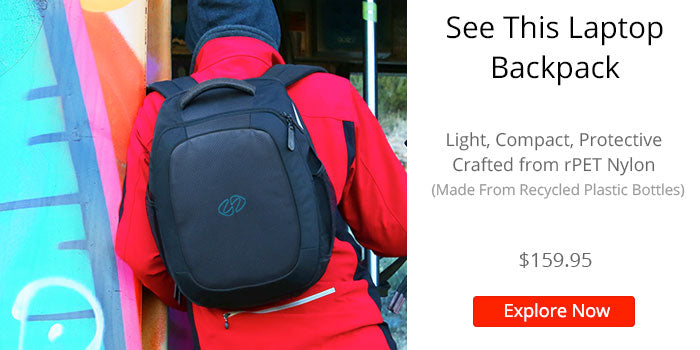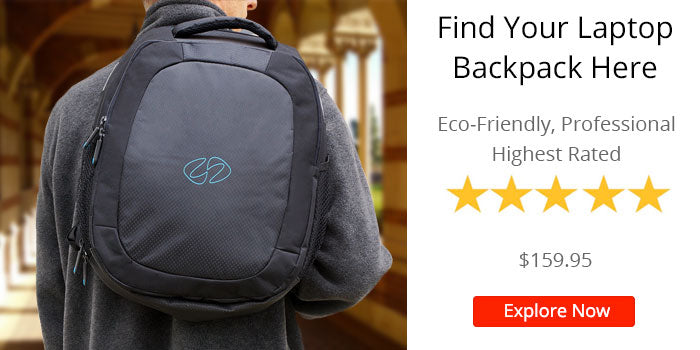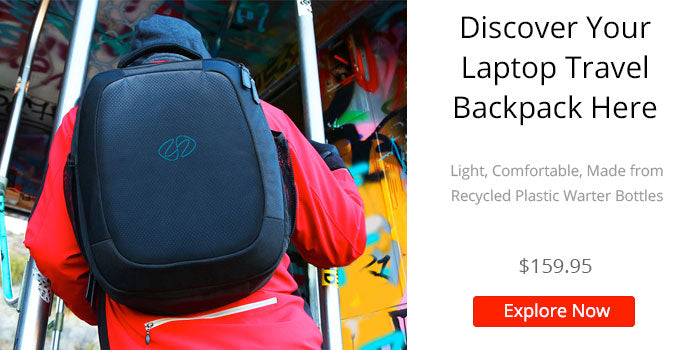What Size Laptop Can Fit in a Backpack?
When considering what size laptop can fit in a backpack, it's essential to recognize that both laptops and backpacks come in various sizes and dimensions.
Whether you're looking for a tech backpack, a laptop backpack, a combination laptop and tablet backpack or a luxurious leather backpack, fit is of the utmost importance. The compatibility between a laptop and a backpack depends on the specific measurements of each, highlighting the importance of selecting a backpack that is appropriately scaled to accommodate your laptop.
In this exploration, we'll delve into the factors influencing laptop and backpack sizes, discuss how their dimensions affect compatibility, and emphasize the significance of finding the perfect fit for optimal functionality and comfort.
What Sizes Do Laptops Come In?
Laptops are available in a range of sizes, typically measured by the diagonal length of the screen in inches. Common laptop sizes include:
• 11 to 13 Inches
Compact and lightweight laptops suitable for portability and everyday use, are often preferred by students and professionals for their versatility.
• 14 to 15 Inches
Mid-size laptops offer a balance between portability and performance and are ideal for productivity tasks, multimedia consumption, and light gaming.
• 16 to 17 Inches
Larger laptops with expansive screens and enhanced computing power are favored by gamers, content creators, and professionals requiring high-performance capabilities.
• 18+ Inches
Desktop replacement laptops featuring oversized displays and powerful hardware configurations, are designed for intensive computing tasks such as gaming, video editing, and graphic design.
The dimensions of a laptop extend beyond the screen size and encompass factors such as thickness, width, and depth, all of which contribute to its overall footprint and compatibility with different backpack sizes.
What Sizes Do Backpacks Come In?
Similar to laptops, backpacks come in various sizes to accommodate different storage needs and preferences. Backpack sizes are typically classified based on their capacity, expressed in liters or cubic inches, which reflects the volume of space available for storage. Common pack sizes include:
• Small Backpacks (15 to 20 Liters)
Compact and lightweight, small tech backpacks are suitable for daily commuting, short trips, or minimalist packing needs.
• Medium Backpacks (20 to 35 Liters)
Versatile backpacks offer ample storage space for everyday essentials, including laptops, books, clothing, and accessories, making them ideal for school, work, or travel.
• Large Backpacks (35+ Liters)
Spacious large laptop backpacks designed for extended travel, outdoor adventures, or carrying bulky items such as camping gear or photography equipment.
The dimensions of a backpack are influenced by factors such as its overall length, width, and depth, as well as the arrangement of compartments, pockets, and organizational features. Selecting the right backpack size involves considering not only the dimensions of the laptop but also the additional items you plan to carry, ensuring that the backpack offers sufficient space and organization for your needs.
Finding the Perfect Laptop Backpack Fit
The compatibility between a laptop and a backpack hinges on finding the perfect fit, where the dimensions of the laptop align with the design and capacity of the backpack. Here are some key considerations for achieving an optimal fit:
• Laptop Compartment Size
Many backpacks feature dedicated laptop compartments or sleeves designed to accommodate specific laptop sizes. When selecting a backpack, check the dimensions of the laptop compartment to ensure that it can comfortably accommodate your laptop without excessive tightness or looseness.
• Overall Backpack Dimensions
Consider the overall dimensions of the backpack, including its length, width, and depth, to assess whether your laptop will fit comfortably inside. Pay attention to the internal dimensions of the main compartment, as well as any additional pockets or compartments where the laptop may be stored.
• Padding and Protection
Evaluate the level of padding and protection offered by the laptop compartment to safeguard your device from impact and damage during transit. Look for backpacks with padded sleeves, reinforced bottoms, and shock-absorbing materials to provide adequate protection for your laptop.
• Weight Distribution
Consider the weight distribution within the backpack to ensure that the laptop is securely positioned and balanced. A well-designed backpack will distribute the weight evenly across your back and shoulders, minimizing strain and discomfort during extended wear.
• Additional Storage Needs
Assess your additional storage needs beyond the laptop, such as accessories, documents, water bottles, and personal items. Choose a backpack with sufficient organizational features, including pockets, compartments, and dividers, to accommodate all your belongings while keeping them neatly organized and easily accessible.
The question of what size laptop can fit in a backpack underscores the importance of finding the perfect fit based on the dimensions of both the laptop and the backpack. Understanding the various sizes of laptops and backpacks, as well as their respective dimensions and capacities, is essential for achieving compatibility and functionality.
By selecting a backpack scaled to accommodate your laptop size and storage needs, you can ensure optimal comfort, protection, and organization while on the go. Whether you're a student, professional, or traveler, finding the perfect fit between your laptop and backpack is key to enhancing your overall user experience and productivity.






